There’s a stretch of road above Positano that snakes along the cliffside, where sky and sea blur in a haze of sun. It’s not a fast road, but it makes you want to drive. And that’s the right place to think about the new Ferrari Amalfi, a new 2+ coupé named fittingly after the Amalfi Coast.
Here’s everything you need to know about the Roma replacement.
Design: Subtle Strength
From first glance, the Ferrari Amalfi is less theatrical than its V12 siblings, but no less expressive. It’s sculpted, not showy. There’s no traditional grille, only a body-colored wing and a dark recess that hides sensors and air intakes.
The car’s proportions are rooted in tradition, long bonnet, short overhangs, but the execution is modern. A subtle wedge rises from the front fender and cuts through the flank. Lighting elements are recessed into those lines, integrated rather than highlighted. At the rear, a full-width character line connects discreet taillights and frames the integrated active spoiler. Finished in a rich Verde Costiera, the launch color inspired by Mediterranean waters, the Amalfi projects presence without shouting.
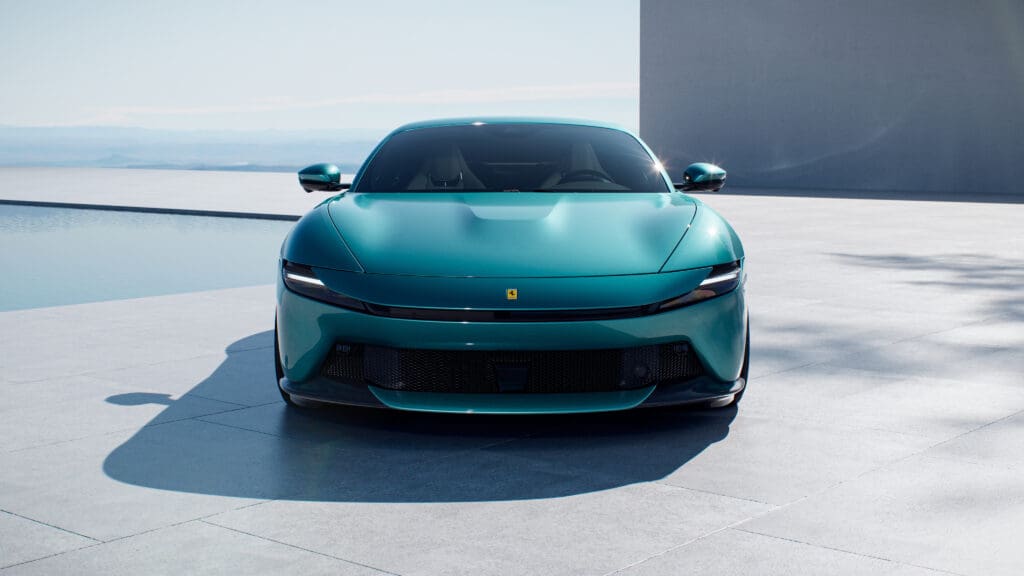
Interior: Dual Focus
Inside Ferrari Amalfi, the dual-cockpit layout carries over from the Roma but evolves with more texture, technology, and tactility. The dashboard is monolithic, combining the digital cluster and vents in one sculpted panel. The central tunnel, milled from anodized aluminum, floats between the seats, housing Ferrari’s gated-style gear selector and new touchpoints.
The materials are luxurious, but not opulent. Contrasting stitching, faceted surfaces, and ambient lighting create a contemporary space. Optional comfort seats add massage functions and adjustable ventilation, reinforcing the Amalfi’s dual personality: part tourer, part tool. A 10.25-inch touchscreen in the center provides access to media, navigation, and vehicle settings, while an 8.8-inch passenger-side display gives co-drivers a glimpse of speed, revs, and G-forces.
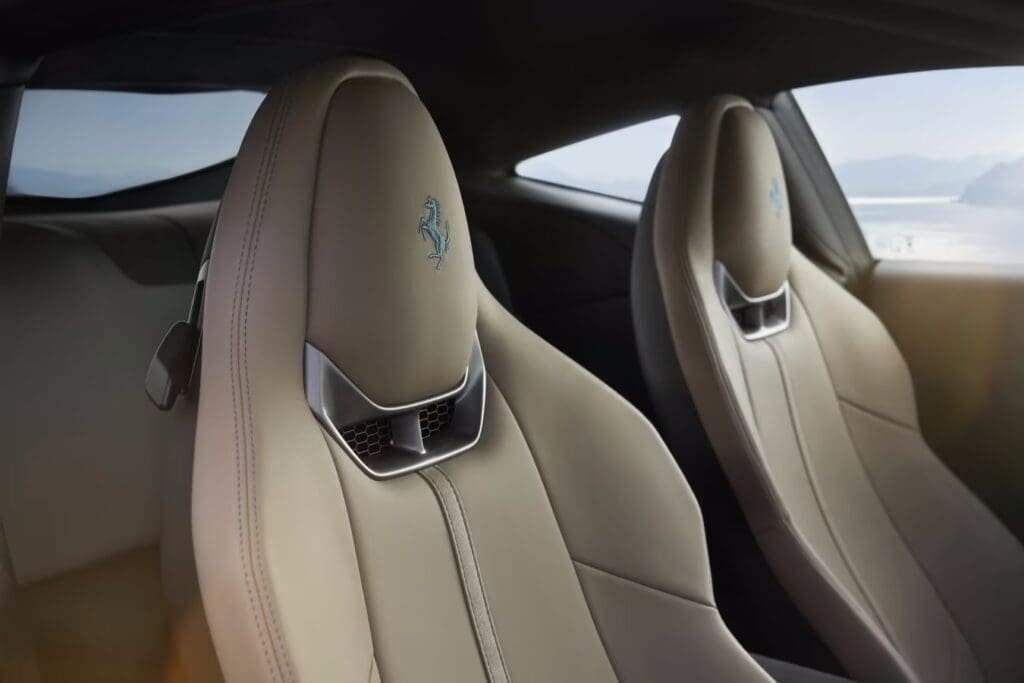
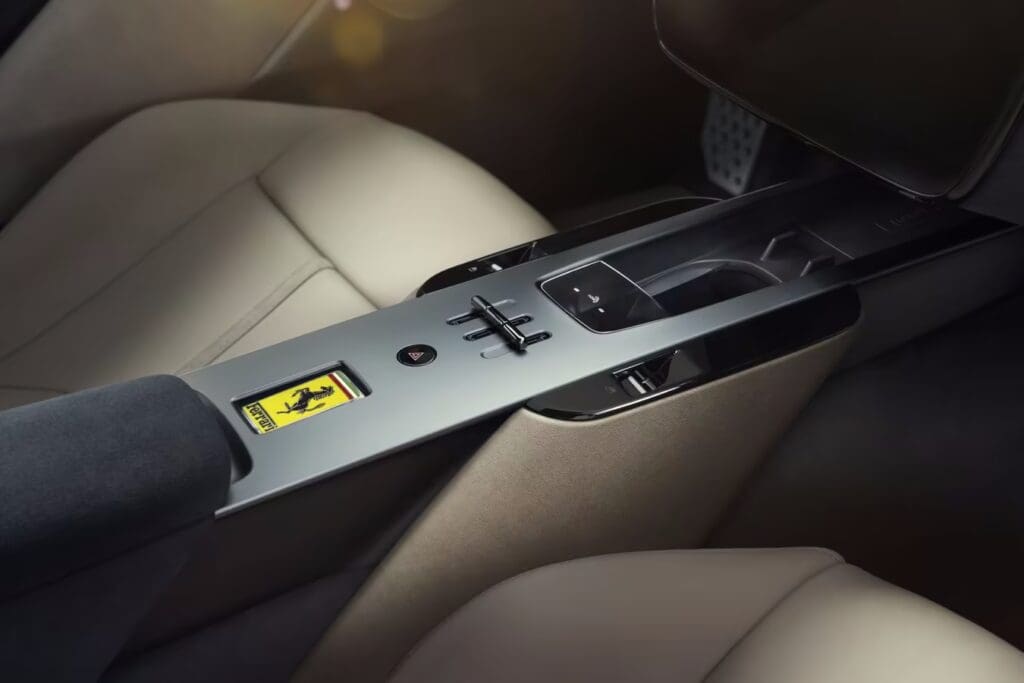
Powertrain: The V8, Refined Again
At the core of Ferrari Amalfi is Ferrari’s latest take on the F154 twin-turbo V8. This version delivers 640 cv at 7,500 rpm, with a broad torque plateau of 760 Nm between 3,000 and 5,750 rpm. It’s a familiar engine, but thoroughly revised: lighter camshafts, a new block, and turbochargers capable of 171,000 rpm make for sharper response and greater efficiency.
Throttle response is improved with equal-length runners and a flat-plane crankshaft. It still sounds like a Ferrari, not as operatic as a V12, but rich, mechanical, and unmistakable. New silencer architecture and ceramic matrix catalysts meet modern regulations without silencing character.
The eight-speed dual-clutch transmission, first seen in the SF90, is quick and clean. It handles town driving as smoothly as mountain switchbacks, aided by intelligent torque management strategies and a dry-sump layout that lowers the center of gravity.
Chassis and Dynamics: Confidence Over Drama
The Amalfi isn’t chasing Nürburgring lap times. It’s chasing confidence, what you feel when the car reads the road, interprets your input, and responds without delay. Brake-by-wire and Ferrari’s latest ABS Evo system, informed by a 6D sensor, allow for precise braking on all surfaces. Side Slip Control 6.1 links everything from steering to torque vectoring for seamless transitions between cruising and pushing harder.
Grip estimation via EPS is 10% faster and more accurate than before. The car doesn’t need to be driven on the limit to understand what’s happening underfoot. The active rear spoiler, harmoniously integrated into the rear profile, adapts to conditions in real time, deploying only when needed, otherwise disappearing into the design.
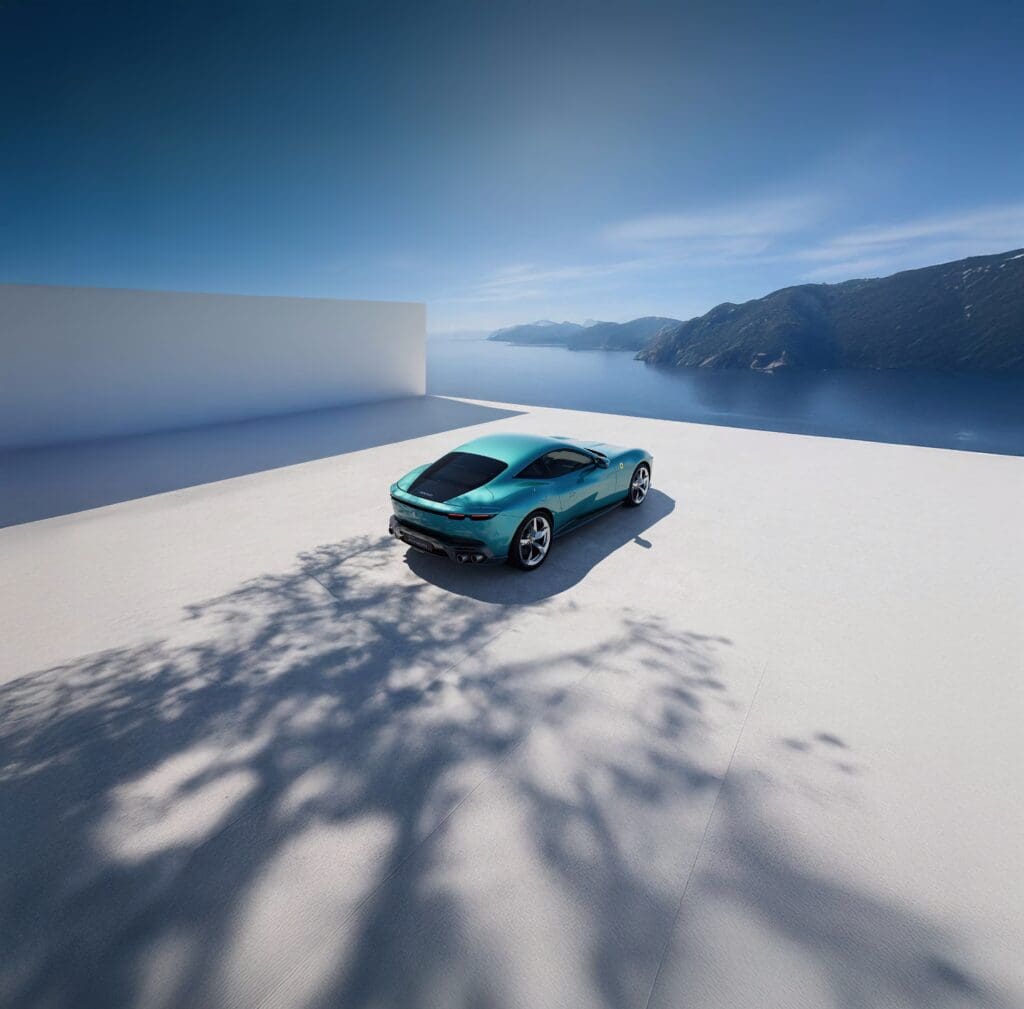
Technology and Comfort: Grand Touring, 2025-Style
Ferrari’s new HMI system anchors the Amalfi’s onboard experience. Physical buttons return to the steering wheel, an intentional pivot away from touch-sensitive overload. The start button is now aluminum, a nod to the tactile rituals of past Ferraris. Displays are plentiful, but logically organized. Apple CarPlay and Android Auto are standard, with wireless charging included.
The optional Burmester® premium audio system, with 14 speakers and 1,200 watts, turns the cabin into a concert hall. Materials used for the speaker grilles were selected not just for acoustics but also for their tactile appeal.
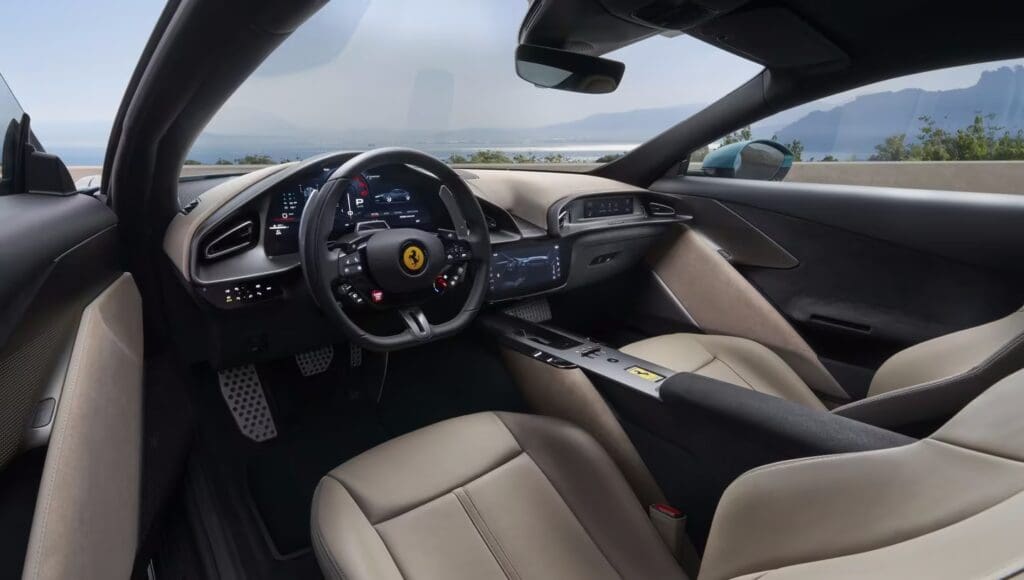
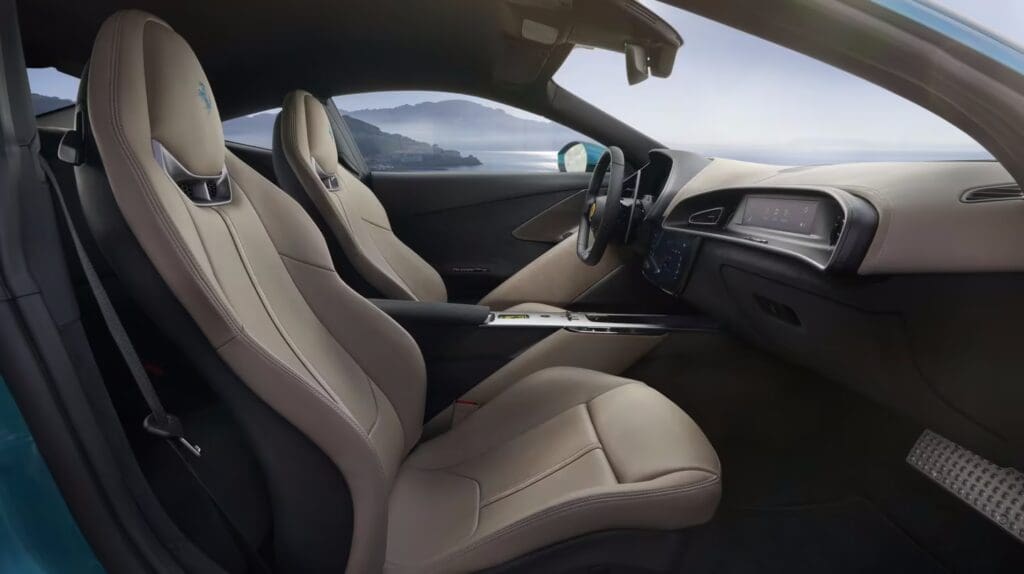
Aerodynamics: Invisible Engineering
A great GT doesn’t need wings and ducts to look fast. The Amalfi hides its aerodynamic work under the skin and within the shape. A front splitter, vortex generators, underbody fairings, and a reworked diffuser contribute to downforce and stability without disturbing the silhouette.
The active rear wing switches between Low Drag, Medium Downforce, and High Downforce modes based on speed and cornering loads. It can deliver 110 kg of downforce at 250 km/h with minimal drag penalty. In normal driving, it disappears entirely.
Cooling systems are also neatly integrated: intercoolers, air conditioning condensers, and radiators have their own paths, ensuring efficiency and avoiding thermal compromises.
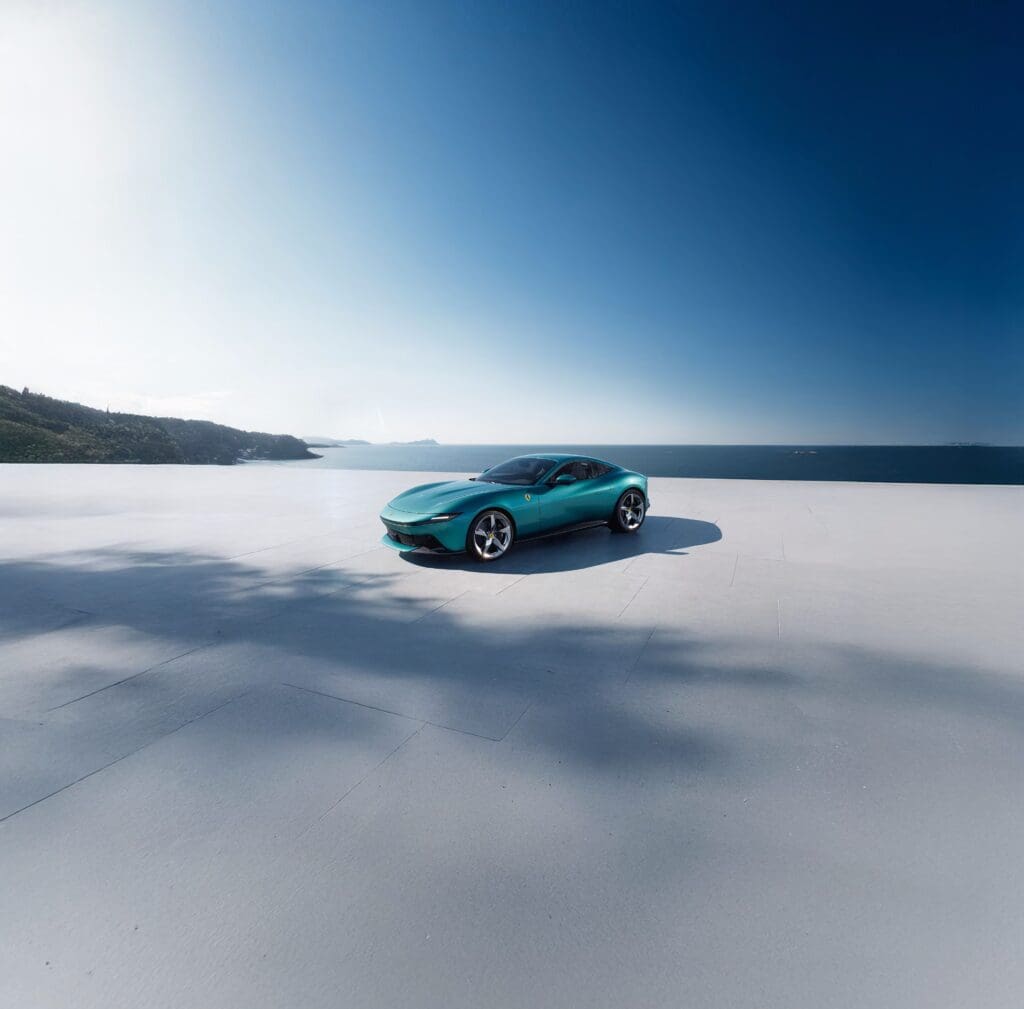
Dimensions and Practicality
At 4,660 mm long and just over 1,300 mm tall, the Amalfi fits the classic GT profile. But its practicality has grown. The 2+ seating arrangement means the rear seats, while tight for adults, can handle children or luggage. The boot offers 273 liters of space, and with the rear seats folded, capacity increases. There’s also an optional front lifter to navigate speed bumps and driveways.
Ownership Experience: Backed by Ferrari
Ferrari includes its seven-year Genuine Maintenance program with the Amalfi. Annual or 20,000 km service intervals, factory-trained technicians, and original parts ensure peace of mind. It’s available globally, and extends to certified pre-owned Ferraris as well, something that quietly bolsters long-term value.
Final Thoughts
The Ferrari Amalfi is not a revolution. It’s a recalibration. One that understands that not every Ferrari owner wants the intensity of a track-focused supercar, but still craves connection, control, and character. It’s for those who want to drive from Milan to Marseille in one day, and enjoy every kilometer. A sports car that wears a suit well, but doesn’t forget its roots. In that sense, the Amalfi earns its name. Not just for its inspiration, but for the journey it invites you to take.
Read more about supercars here.